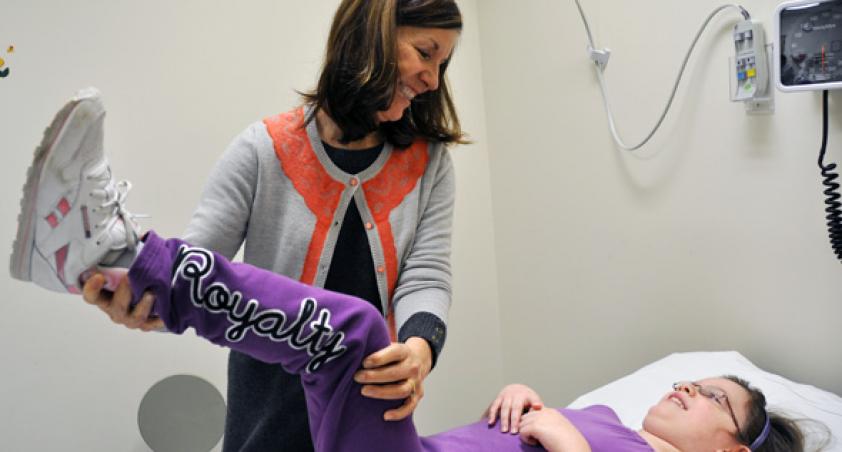The Hypertonia Assessment Tool (HAT) is a research and clinical guide for identifying the different types of hypertonia in the paediatric population. It helps both researchers and clinicians to identify when spasticity or dystonia are present. The HAT is used in research settings to better describe the subjects’ hypertonia sub-type. For clinicians, it helps to identify when spasticity, dystonia or mixed tonal patterns are present which can help to guide treatment and/or diagnostic decisions.
Developed by Dr. Darcy Fehlings, her team in the Cerebral Palsy Discovery Lab in the Bloorview Research Institute, and in conjunction with Dr. Jon Mink, Dr. Anne Kawamura and the Childhood Motor Task Group, the HAT is a seven-item tool that has been developed for children and youth between the ages of four to 19 years.
How does the HAT work?
The Hypertonia Assessment Tool involves an evaluator moving a child’s arm or leg in a series of purposeful stretches and movements in order to observe movement, increased tone and/or resistance. The presence of at least one HAT item per hypertonia subgroup (spasticity, dystonia, rigidity) confirms the presence of the subtype and the presence of items from more than one subgroup identifies the presence of mixed tone. The HAT is capable of discriminating hypertonia subtypes for both the upper and lower extremities and takes approximately 5 minutes to conduct per limb assessed.
Contact Information
Please contact Dr. Darcy Fehlings, developer of the Hypertonia Assessment Tutorial (HAT) with any questions and comments.
Darcy Fehlings
HAT Developer, Principal Investigator and Head of the Cerebral Palsy Discovery Lab
E-mail: dfehlings@hollandbloorview.ca
